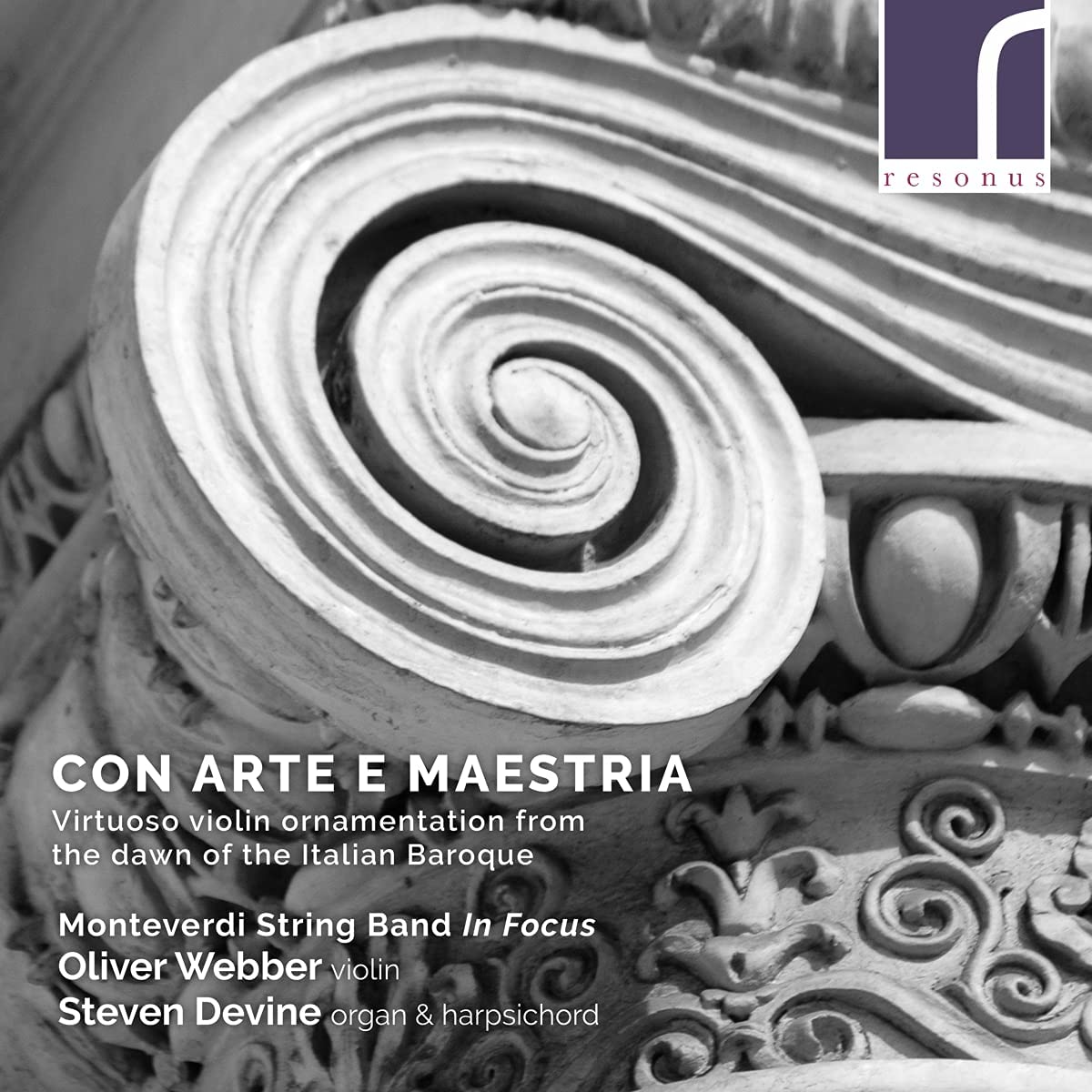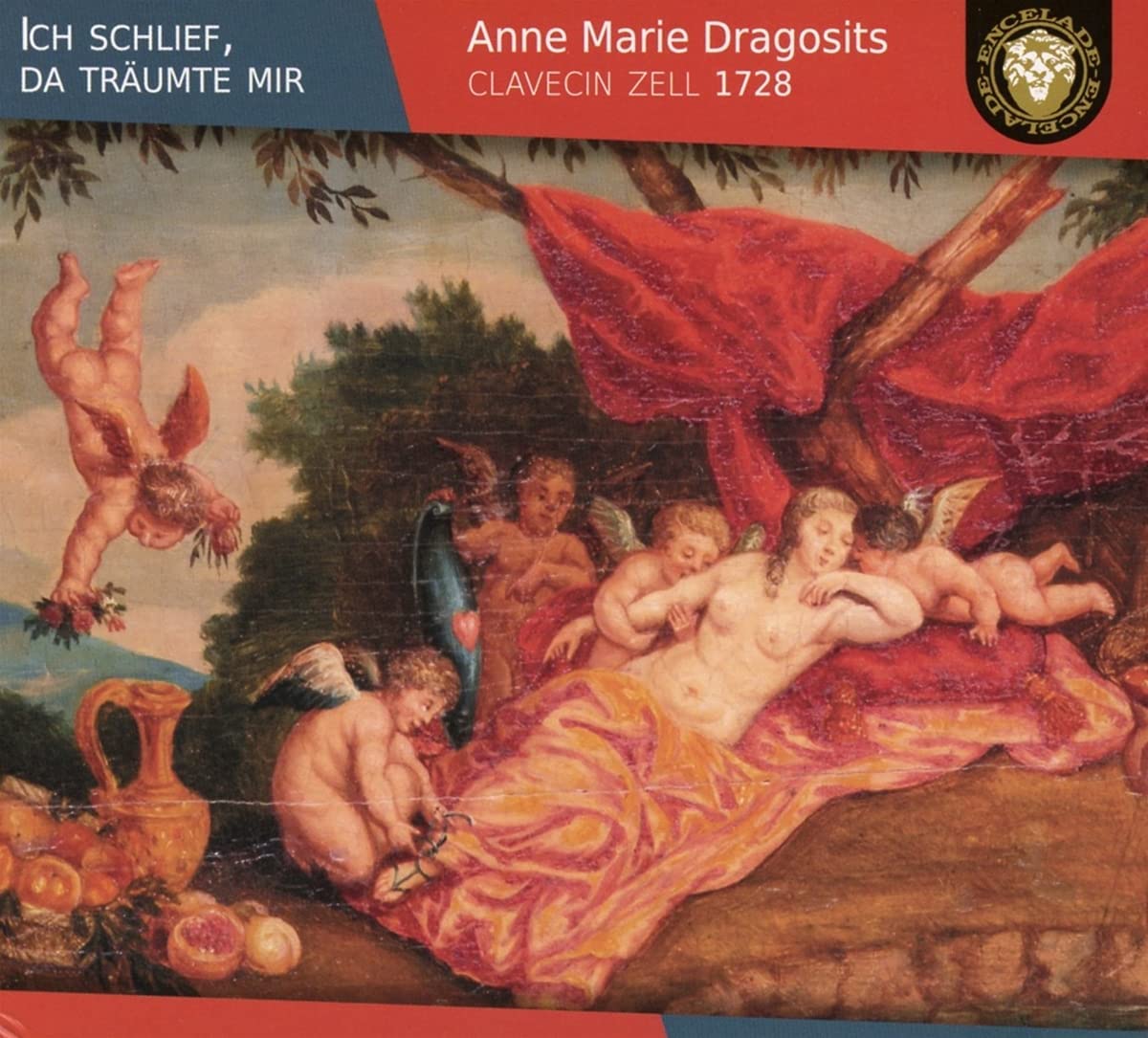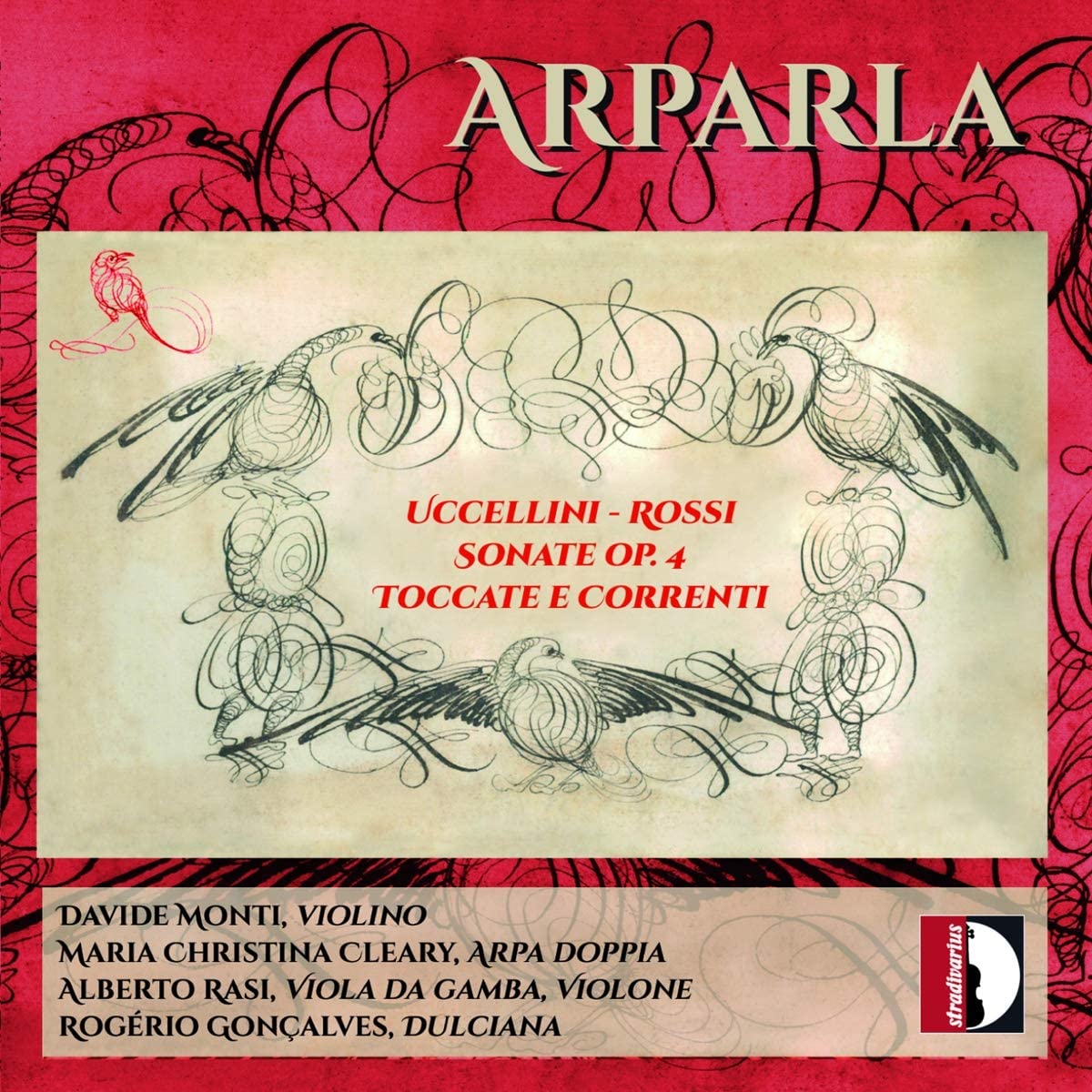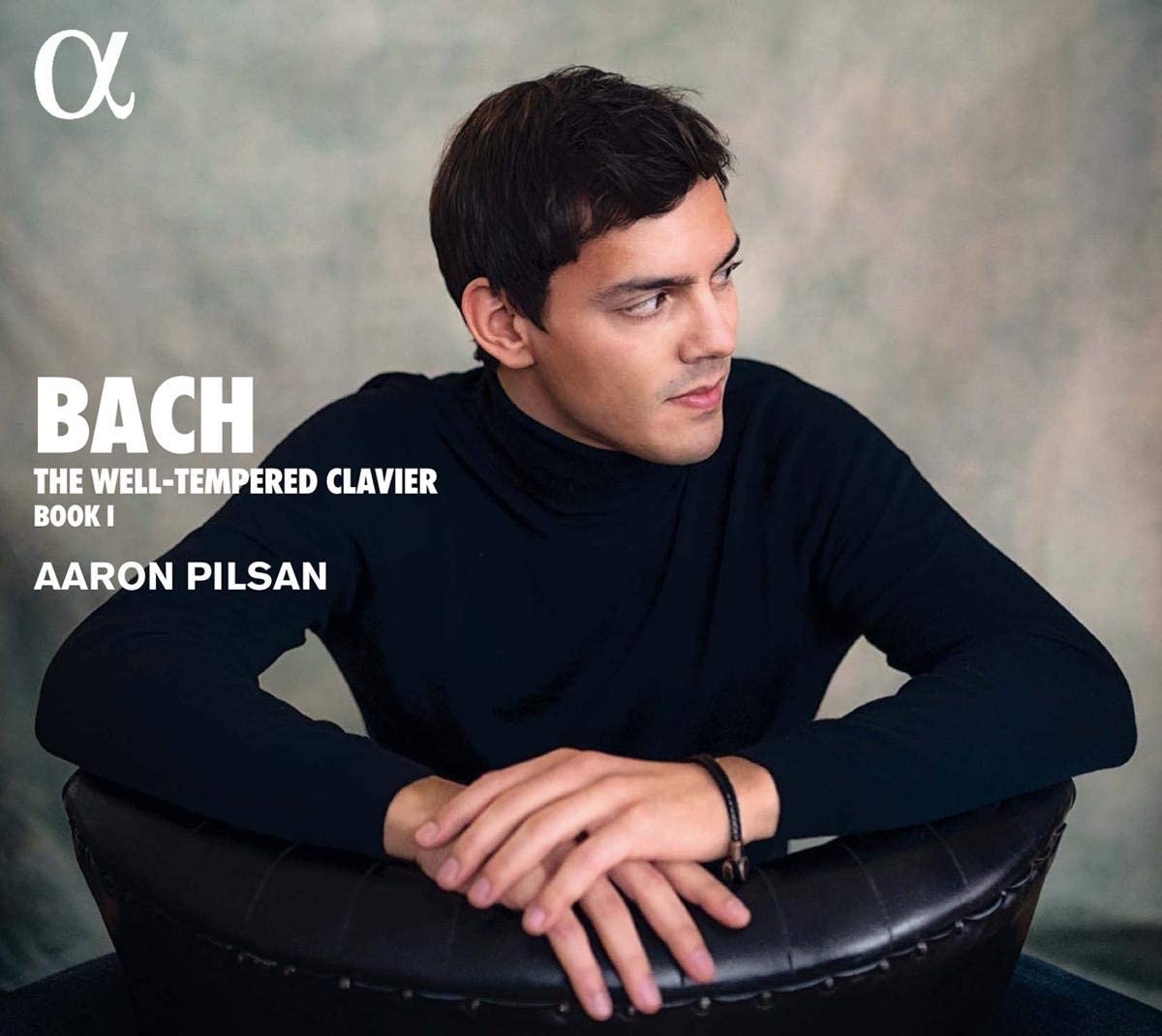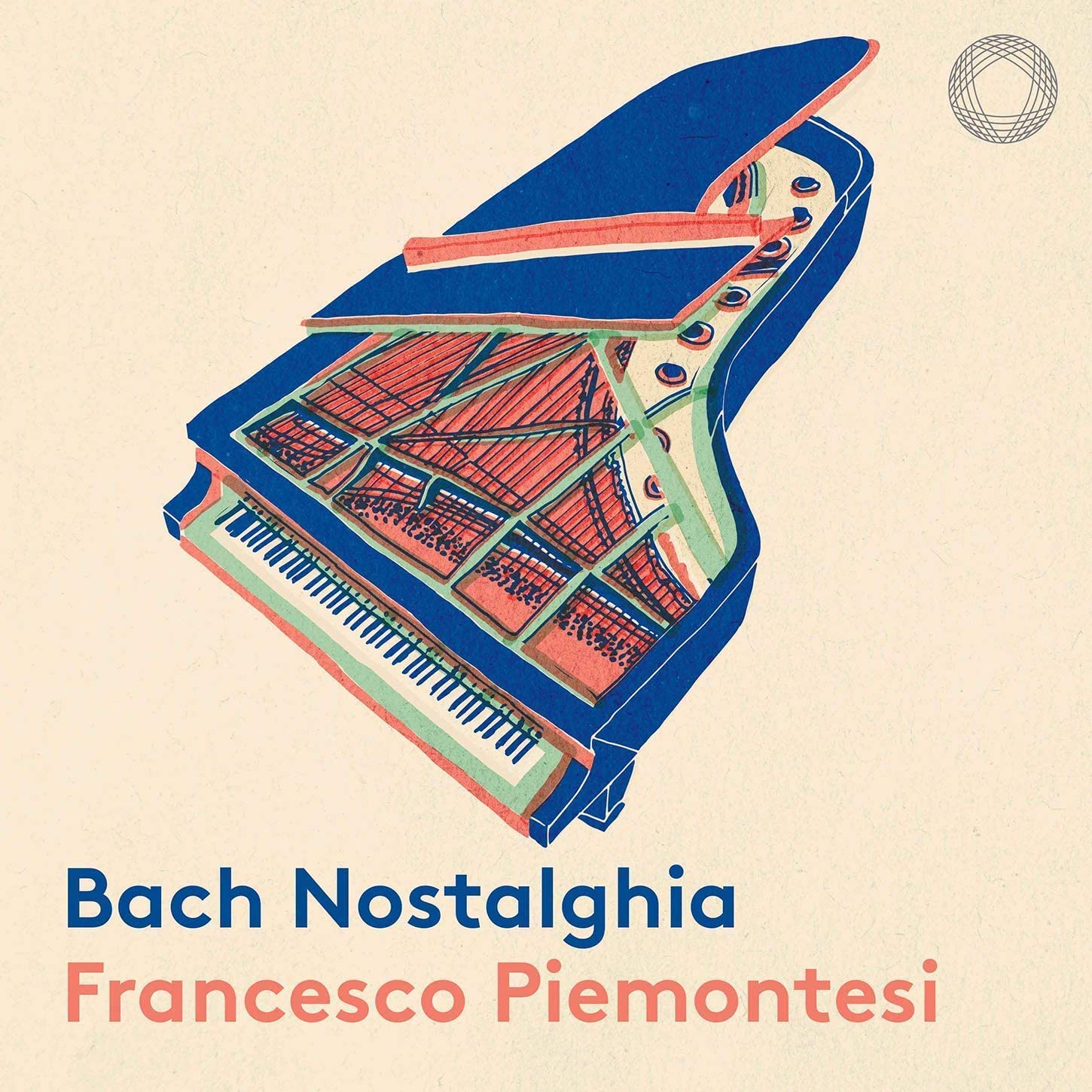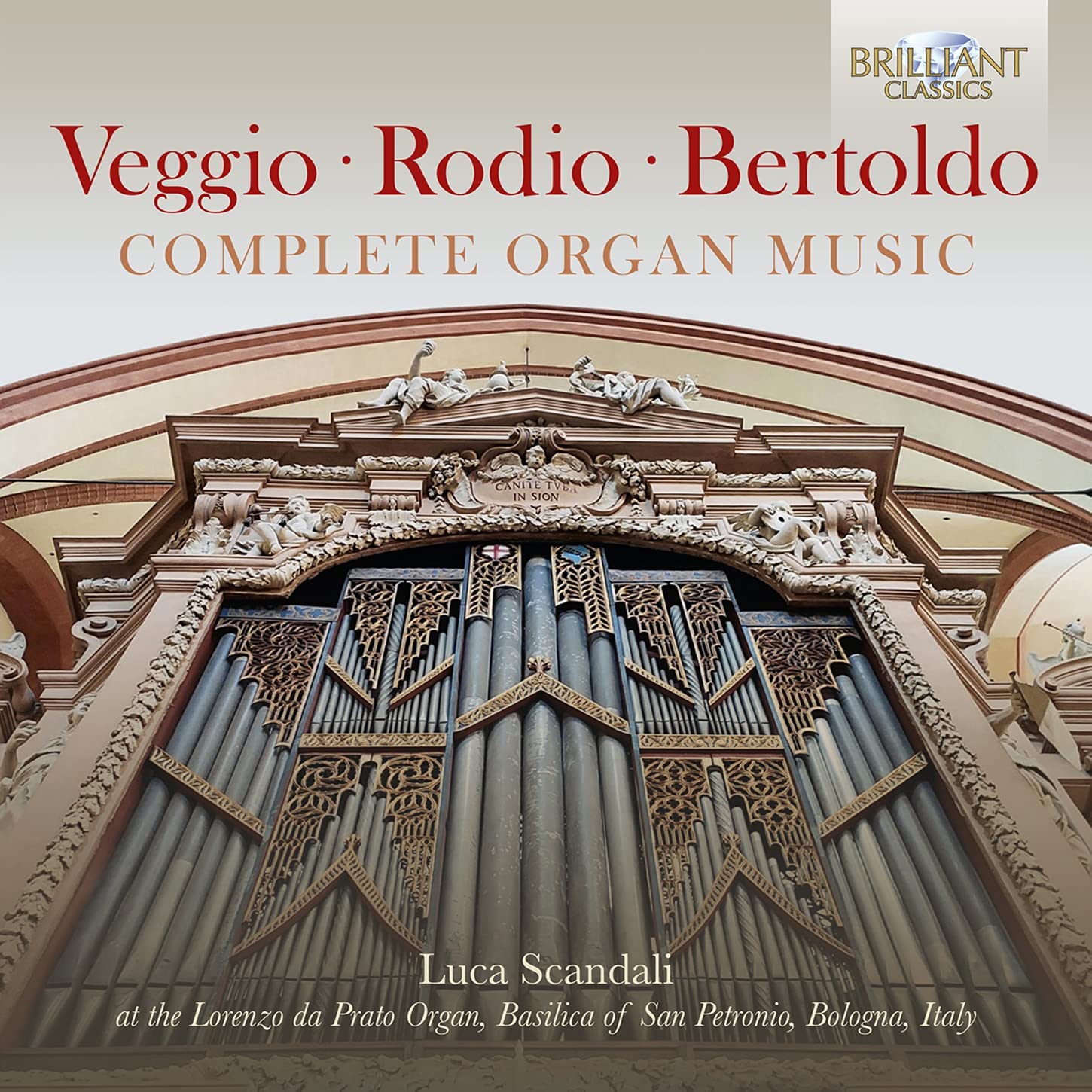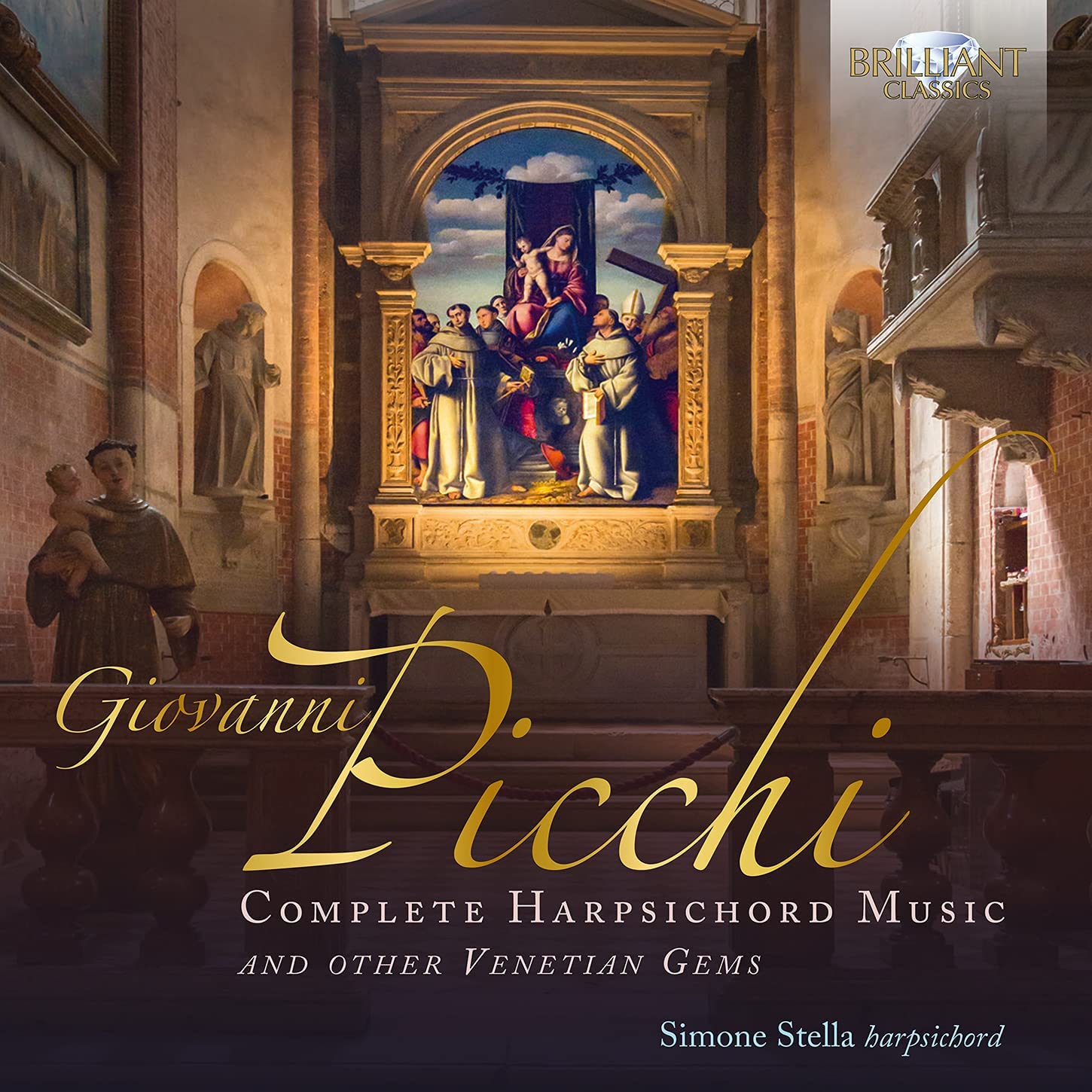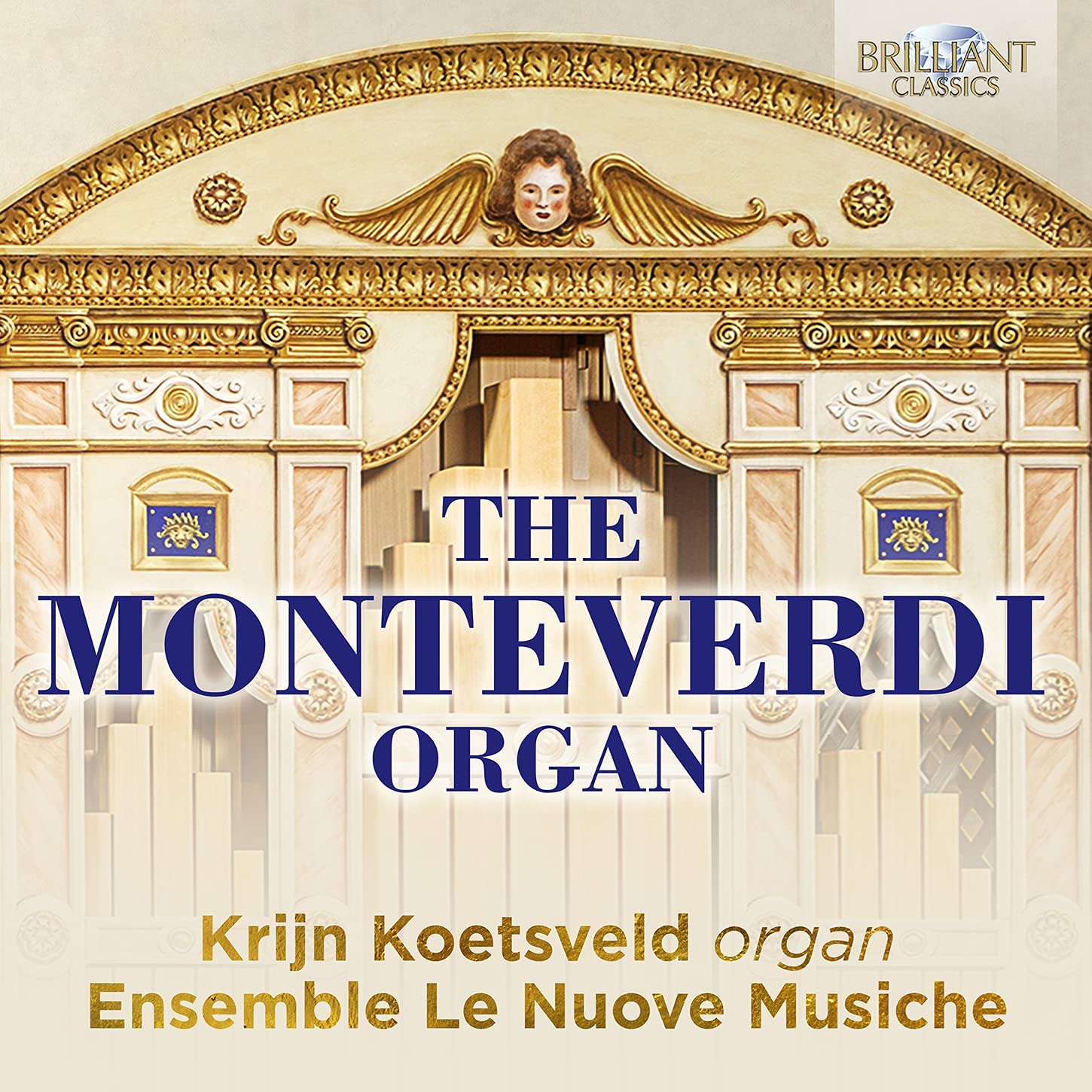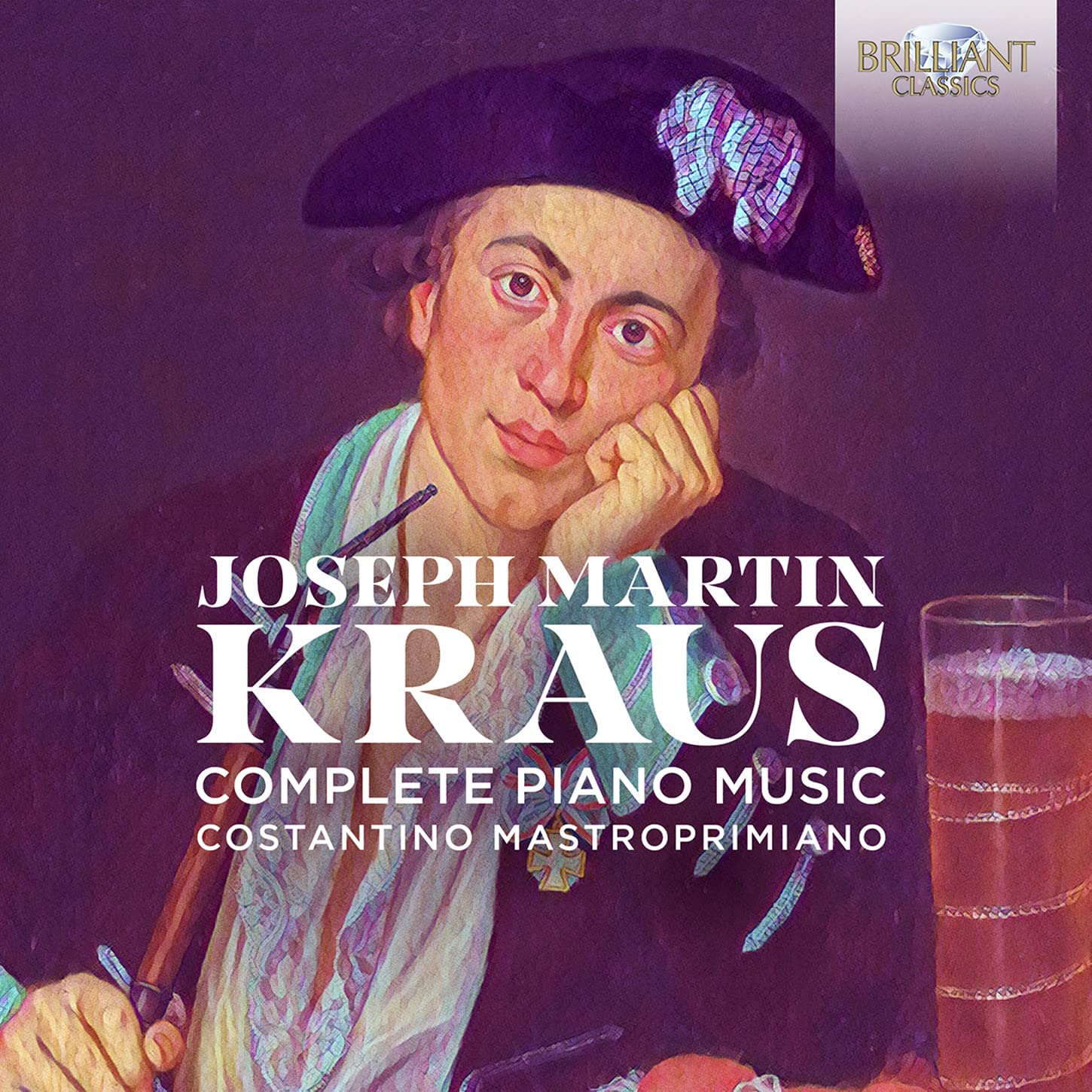Virtuoso violin ornamentation from the dawn of the Italian Baroque
Monteverdi String Band In Focus, Oliver Webber, Steven Devine
78:45
resonus RES10282
Click HERE to buy this on amazon.co.uk
[These sponsored links help the site remain alive and FREE!]
It has become apparent that Italian music composed towards the end of the 16th century and in the early part of the 17th century was almost invariably intended to be lavishly ornamented in performance. Tantalisingly, but also mercifully for players aiming for historically informed performances of this repertoire, some composers and players occasionally wrote out the divisions they were clearly using all the time, while a number of theoreticians wrote treatises with examples of ornamentation. One such, the Selva di varii passagii by Francesco Rognoni, gives us the heading for this CD as the title ends con arte e maestria. The violinist Oliver Webber and keyboard player Steven Devine, individually and together, apply these treatises to a variety of appropriate pieces, as well as performing versions of works which have survived in ornamented forms. In addition, Webber supplies a couple of improvised showpieces ‘in the style of Bassano and Monteverdi’ – there can be little doubt that once the early violin virtuosi had mastered the art of ornamentation, in a sense recreating the original works, they would have been emboldened also to improvise more freely in the style of the time, as we know for a fact all the great keyboard masters did. I still remember my astonishment at leafing as a student through Ganassi’s Fontegara, a guide to ornamentation from the earlier 16th century, with its blizzards of scales and other written-out ornaments, including trills in thirds and fourths – who does those? While we can never be absolutely sure how performances sounded in the historical past, Webber and Devine have done an excellent job of thinking themselves back into the role of early Baroque virtuosi, and their performances of this repertoire, encrusted with ornamentation, is musically convincing and thrilling. The nearest parallel to this ‘living art’ of ornamentation must be the aleatoric nature of some jazz idioms, but of course the difference is that we can hear how the latter worked in performance. Webber and Devine apply their consummate technical skills and flawless musical instincts to bring this vital performance technique vividly back to life – and with considerable ‘art and mastery’.
D. James Ross
